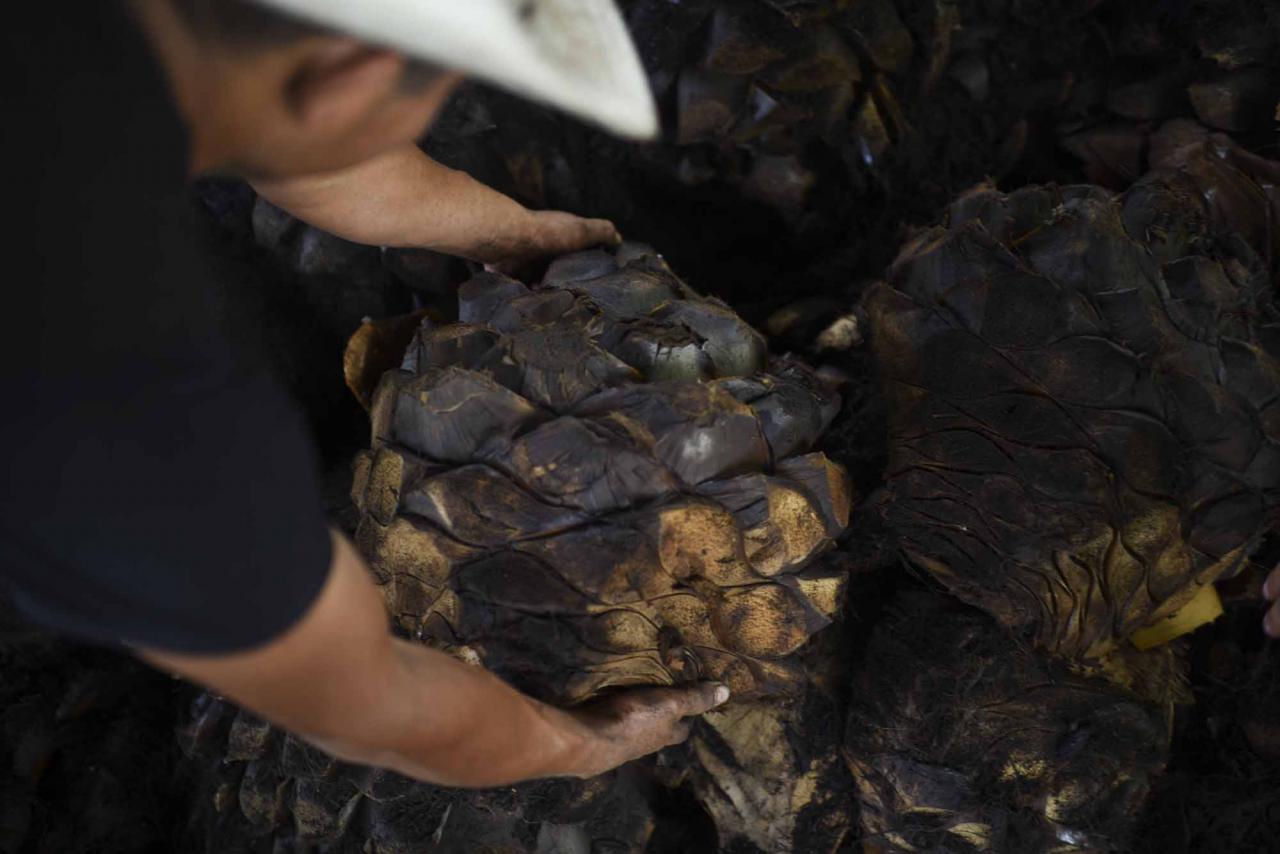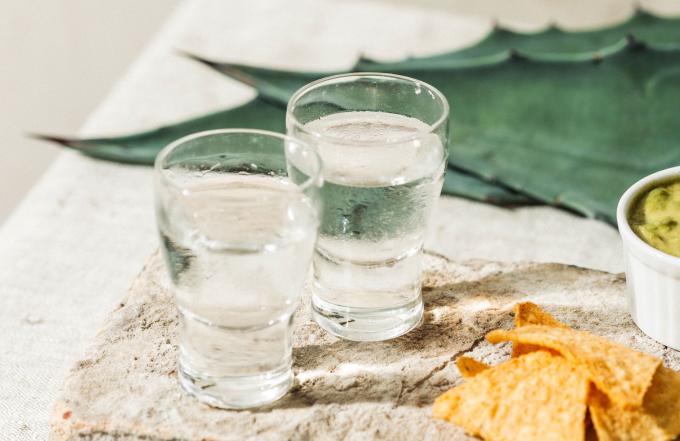A vue d’oeil, Sosima Olivera peut évaluer la qualité d’une agave, la plante du mezcal, l’alcool mexicain à la mode dont les producteurs artisanaux redoutent les fruits amers du succès international et de la surexploitation.
« La bouteille (de mezcal) est un résumé de tout ce que nous faisons depuis des années », se félicite Sosima en arpentant ses plantations de feuilles vertes, épaisses, géantes, grimpantes et piquantes – à ne pas confondre avec des cactus – à travers les collines de Sola de Vega, dans le sud-ouest du Mexique.
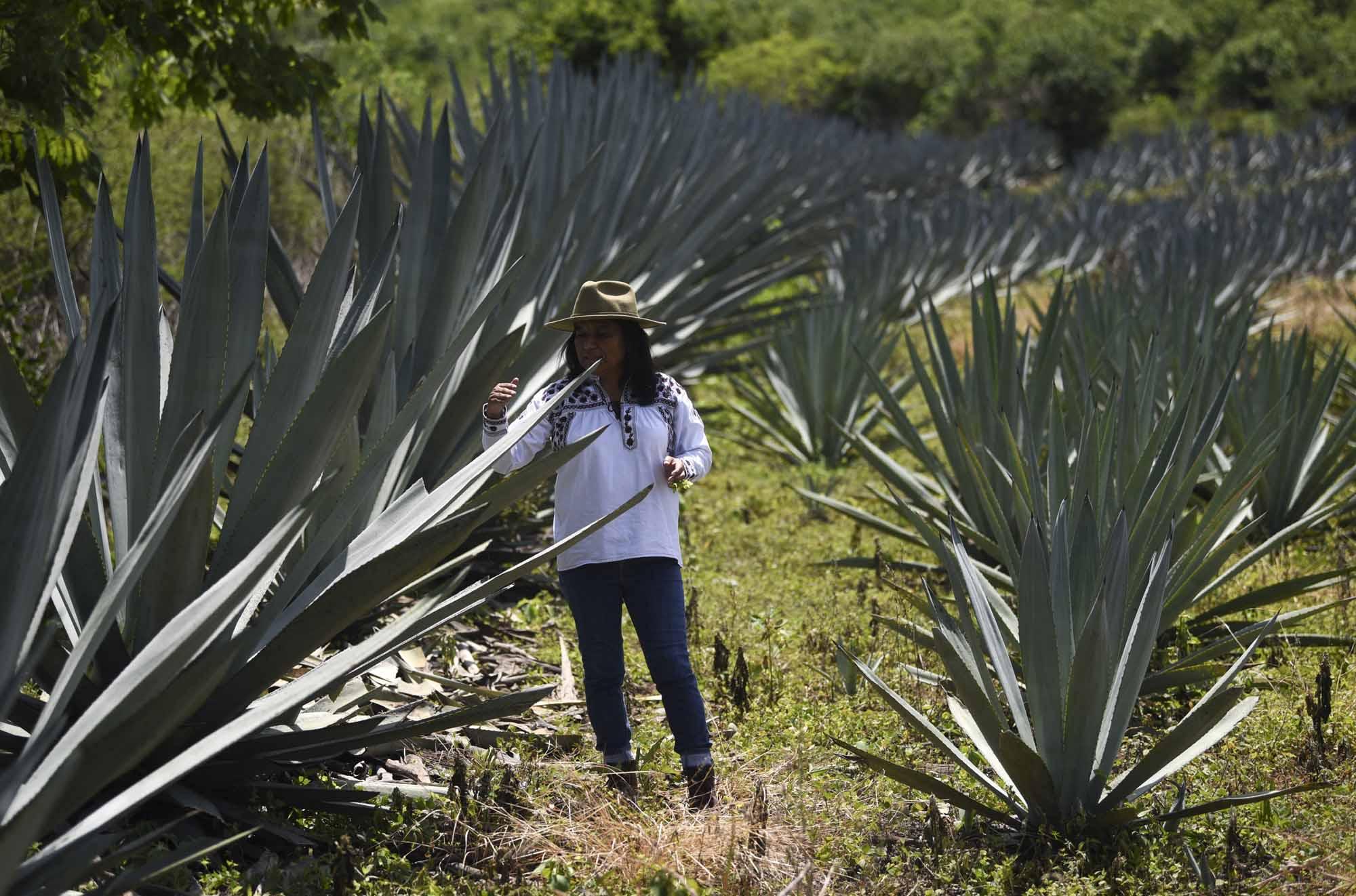
Sosima, 50 ans, anime un collectif de « mezcaleros » dans l’Etat du Oaxaca, un raccourci du Mexique entre côte Pacifique et extrémité sud de la Sierra madre, avec des traditions authentiquement entretenues par les communautés zapotèques et mixtèques.
Lire aussi| La cuisine mexicaine en Belgique: recettes et bonnes adresses
Oaxaca est le berceau du mezcal, dont la cote grimpe dans les bars à cocktail aux Etats-Unis, au Canada, en Espagne, en France et en Allemagne. Les exportations sont passées de 19,7 millions de dollars en 2015 à 62,9 millions en 2020, selon les données officielles. Les marques font souvent allusion à l’euphorie que procure un alcool qui chauffe les entrailles à 40 ou 50 degrés: « Viejo indecente » (vieil indécent), « Pierde almas » (âmes perdues), « Mil diablos » (mille démons).

Des « mezcalerias » ont flairé la bonne affaire autour de la cathédrale Santo Domingo à Oaxaca-ville, le fief de grands artistes mexicains du XXe siècle (Francisco Toledo et Rufino Tamayo) pris d’assaut par les touristes.
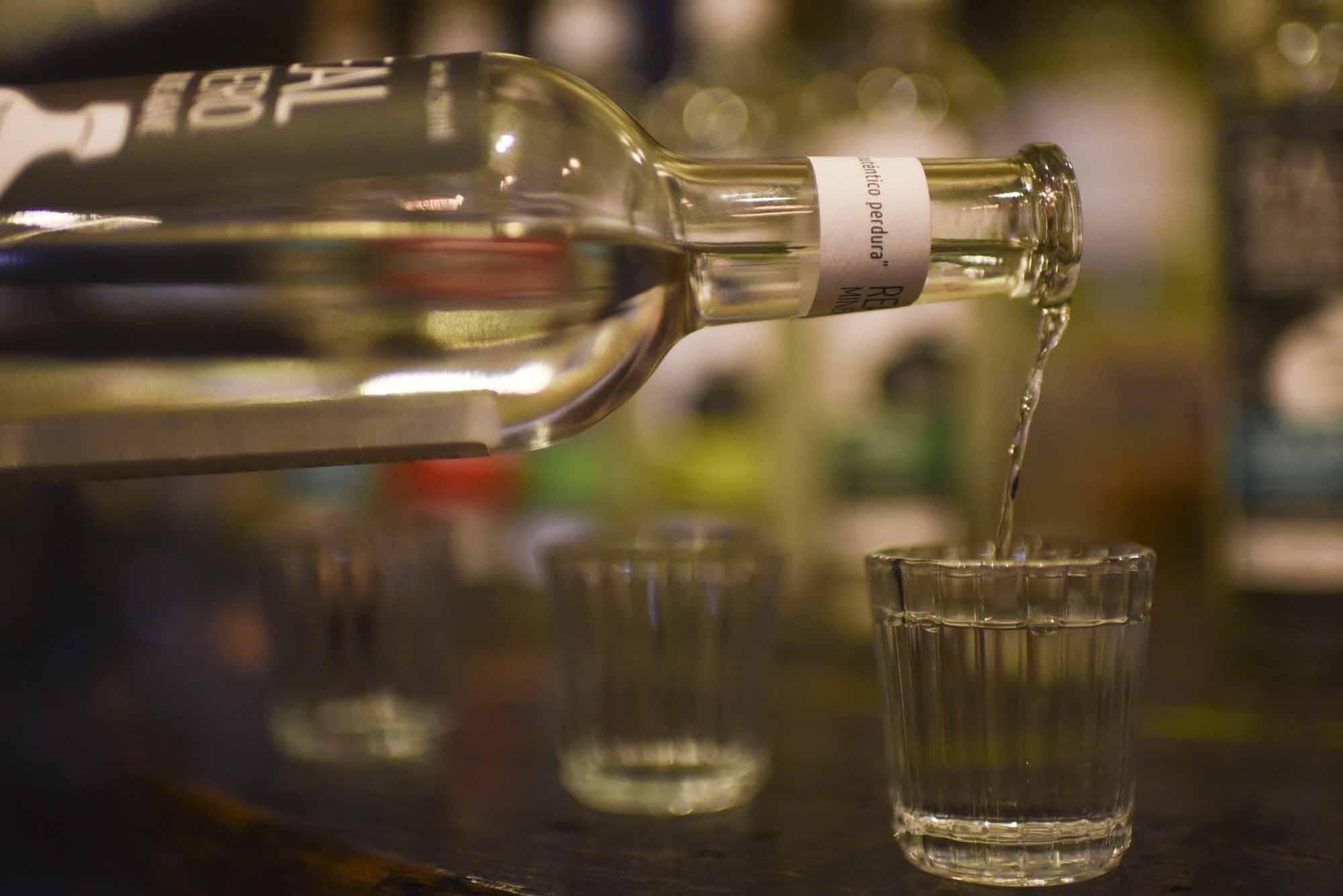
Ces débits de boisson servent le mezcal dans des dés à coudre malgré le dicton local qu’il vaut mieux ne pas prendre au pied de la lettre, en effet: « Pour chaque mal, un mezcal. Pour chaque bonheur aussi. Elle s’il n’y a pas de solution, un litre et demi ».
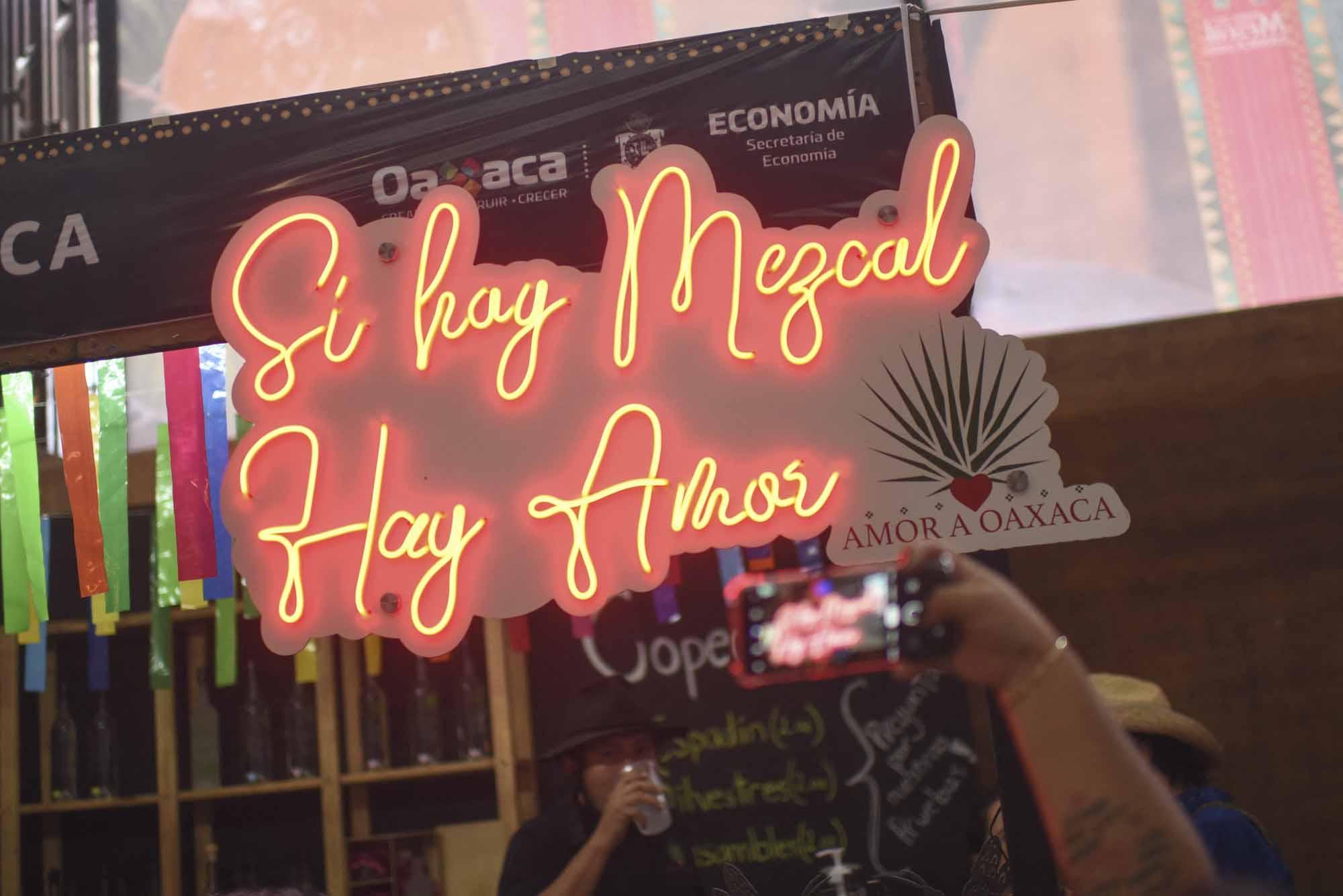
Sans agave pas de mezcal
Le mezcal dérive de l’agave – également appelé maguey, plantes de la famille des Asparagaceae -, tout comme la tequila, fille unique de l’agave bleue de l’Etat du Jalisco, plus au nord.
Lire aussi| Recette: Les birria tacos, mode d’emploi
Plus raffiné au goût, le mezcal utilise différents types de plantes et sa production artisanale prend plus de temps d’élaboration. Certaines plantes demandent 13 et 15 ans pour mûrir, et même jusqu’à 17 ans dans le cas du « tepeztate ». Loin de se réjouir de la notoriété mondiale du mezcal, Sosima s’inquiète des conséquences du boom de la demande commerciale.
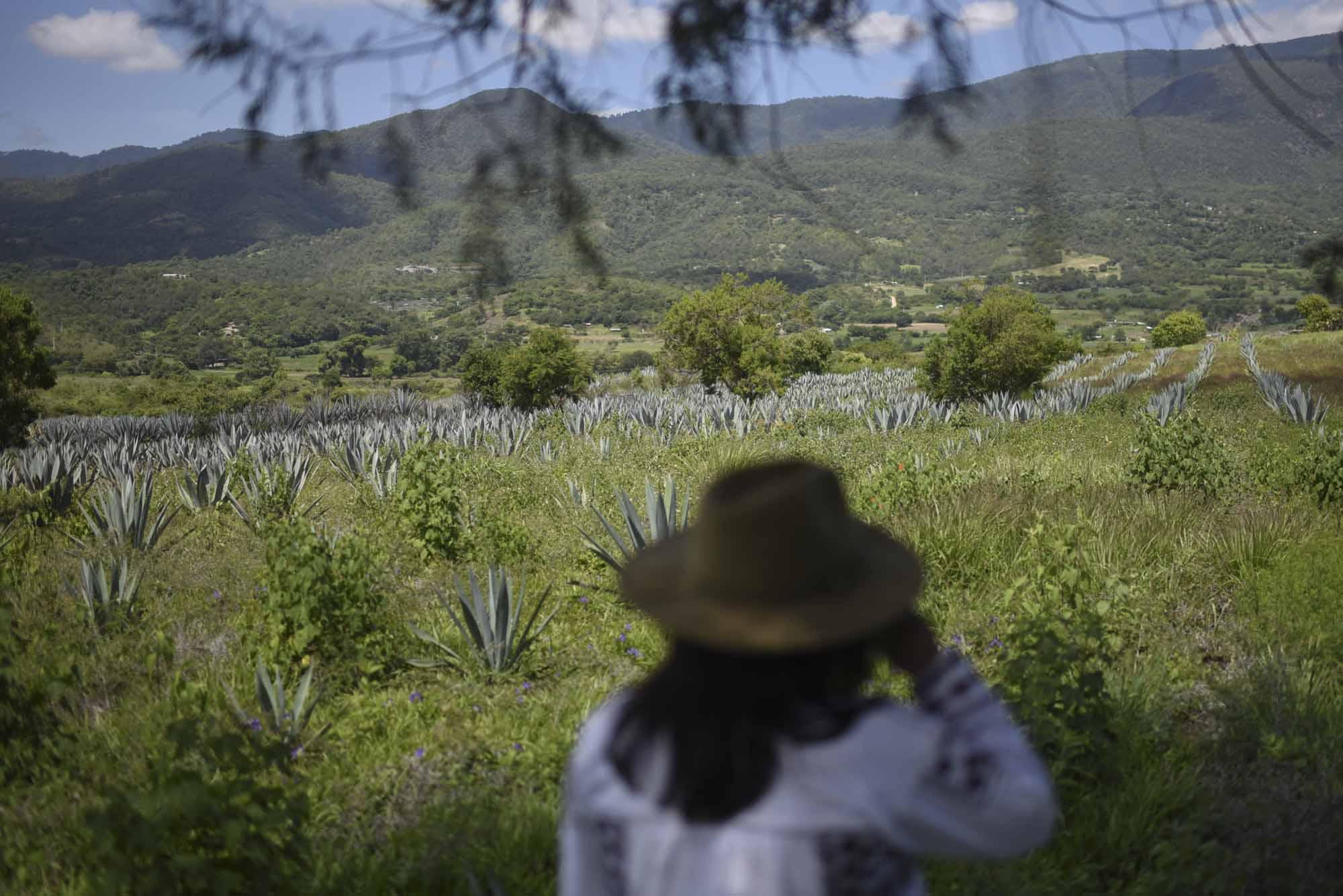
« S’il y a besoin de davantage de plantes, il y a davantage d’exploitation de la terre, des paysages, de la biodiversité, du bois », analyse-t-elle, face à ses jarres en argile dans laquelle elle distille une eau de vie de sa propre marque, « Fane Kantsini » (Trois colibris en chontal, sa langue indigène).
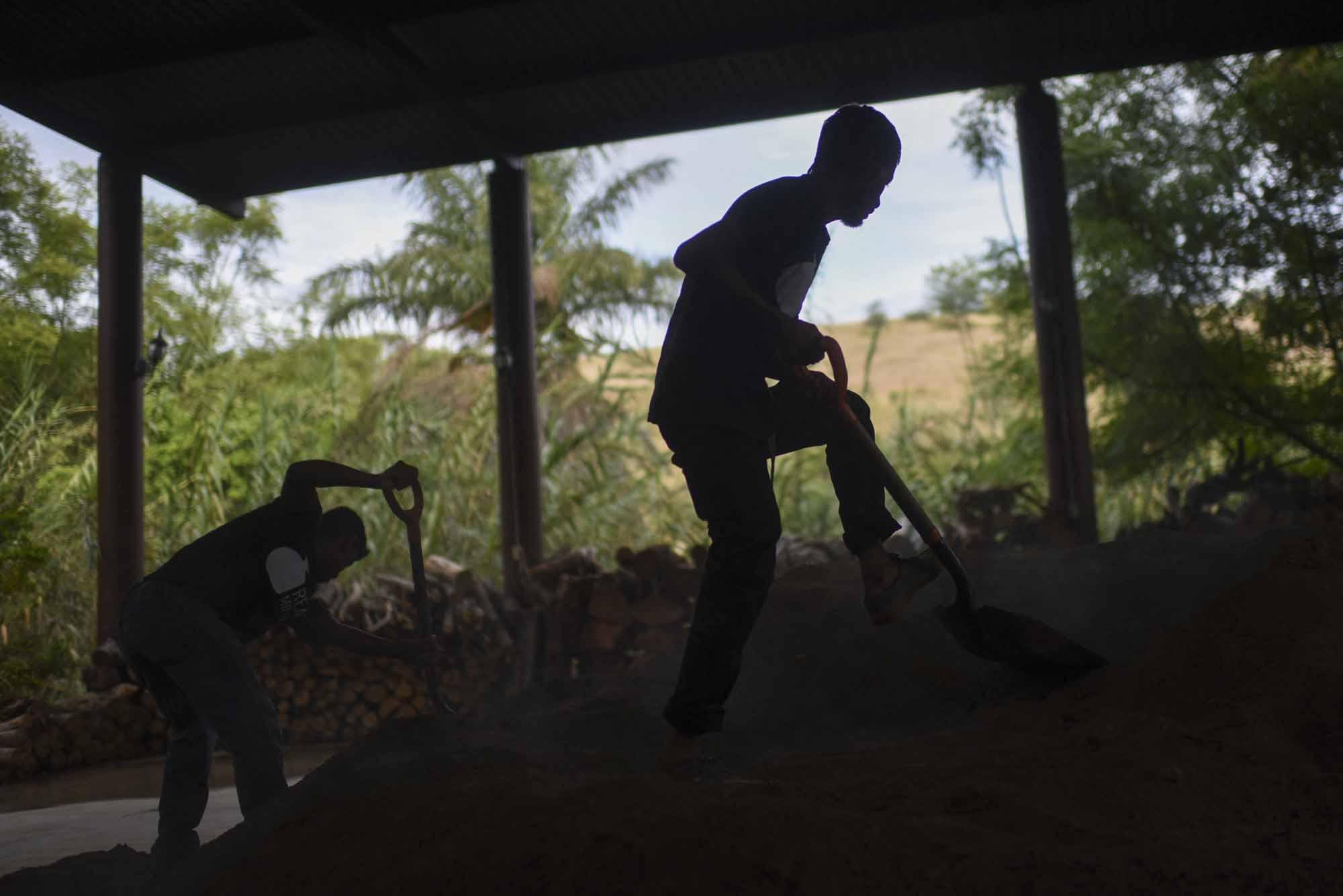
« Très peu d’efforts sont faits pour conserver les espèces d’agave », déplore une autre productrice, Graciela Angeles, 43 ans. « Sans maguey, il n’y a pas de mezcal », assène-t-elle, un dicton aussi vrai que celui en vogue dans les « mezcaleria » de Oaxaca-capitale. Graciela cultive pour sa part de multiples variétés de graines et de semences sous une immense serre.
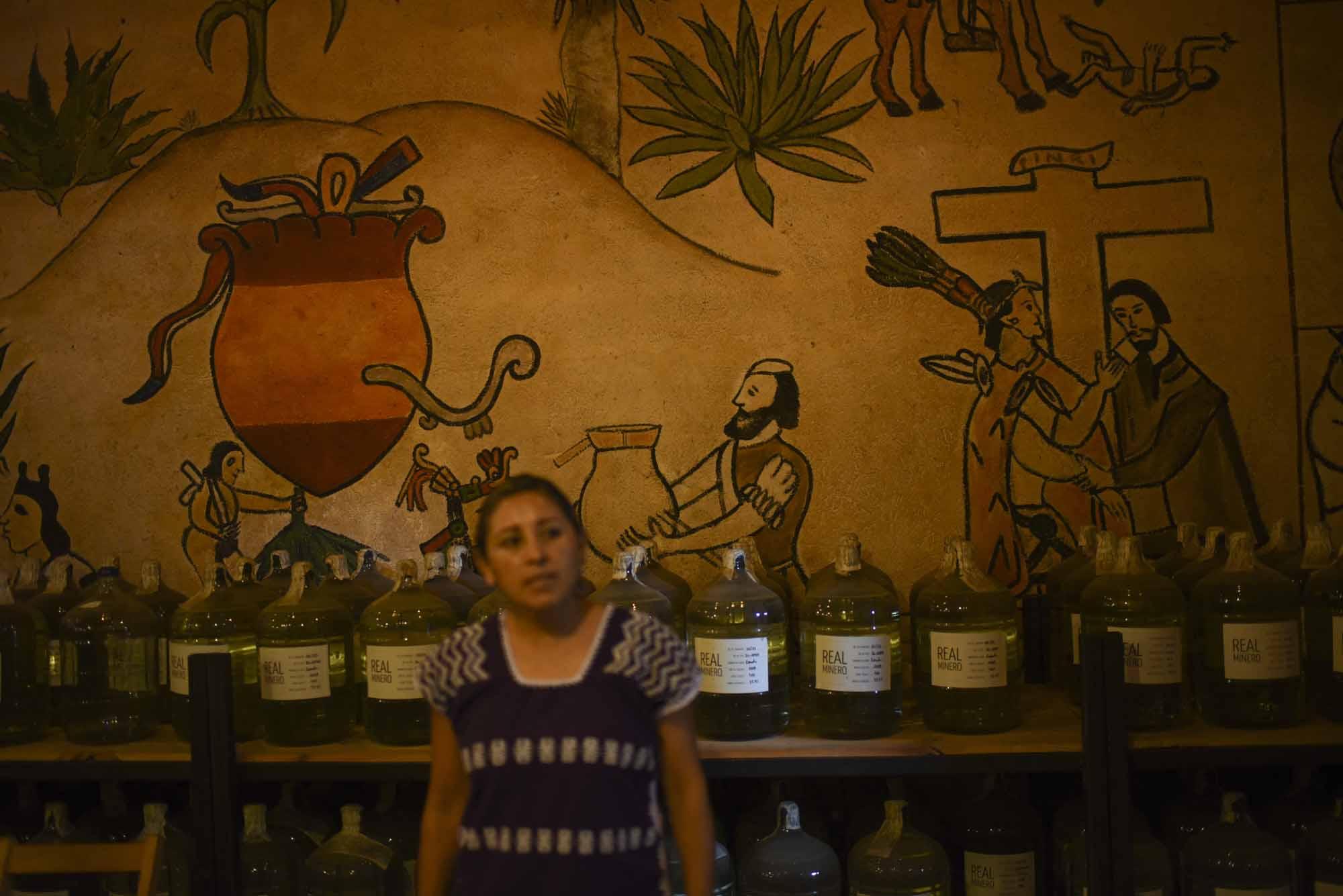
Elle détaille le processus complexe de l’élaboration de la liqueur, dont la réussite dépend en grande partie du flair et du talent du maître « mezcalero ». Autre danger : certains « palenque » (atelier de distillation) artisanaux ne sont en fait que des sous-traitants de grandes marques, avec l’arrivée de grands capitaux dans le commerce juteux du spiritueux. Une marque comme « 400 conejos » (400 lapins) a pignon sur rue jusque dans les duty-free des aéroports. En moyenne la bouteille de 750 ml coûte 40 dollars à Oaxaca.
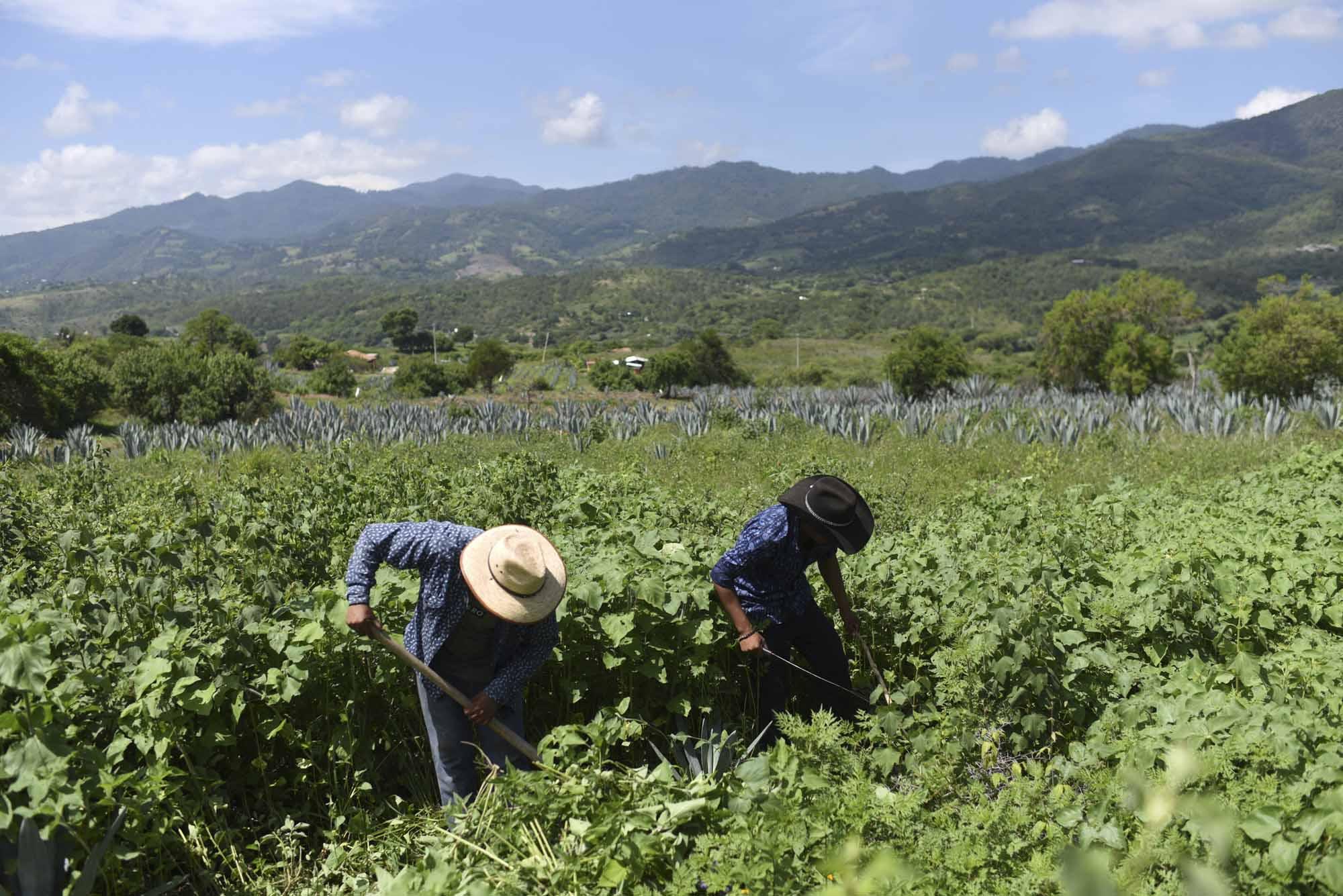
En contraste avec ce modèle affairiste, le mezcal de Sosima et d’Angeles est le fruit d’un lent processus. « Les petits producteurs comme nous vont toujours exister dans les villages », espère Sosima. Des producteurs adeptes d’une agriculture raisonnée, semant peu mais bien, explique-t-elle en substance. Les deux femmes productrices de mezcal organisent des séances de dégustation pour éduquer les consommateurs.
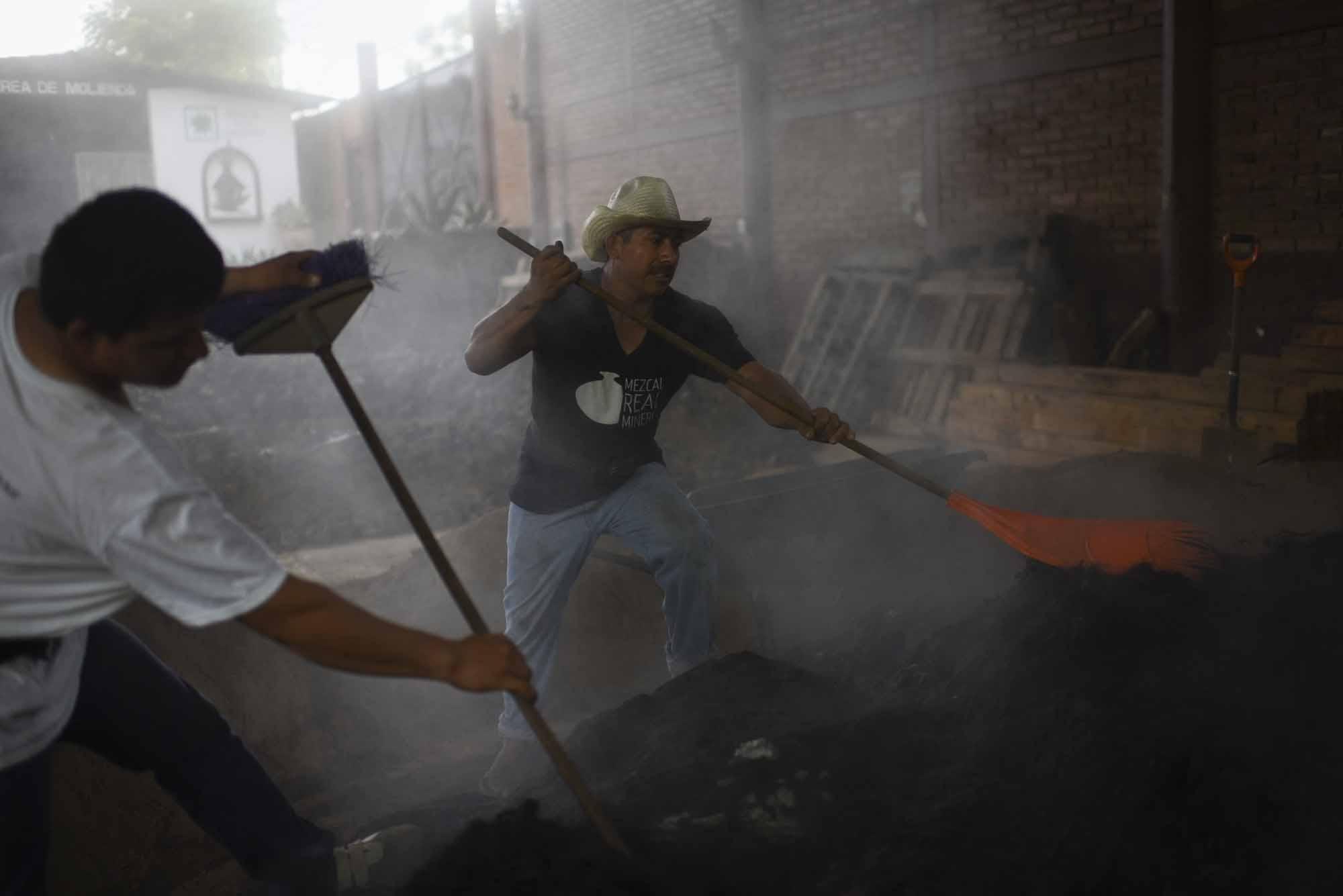
« Ce qu’il y a derrière le mezcal, je l’ai appris après être tombé amoureux de la saveur », affirme Christopher Govers, un touriste dans une fête du mezcal qui a attiré plusieurs centaines de personne à Oaxaca-capitale. Dans son dos, au plus fort de la fête, deux hommes passent en titubant.
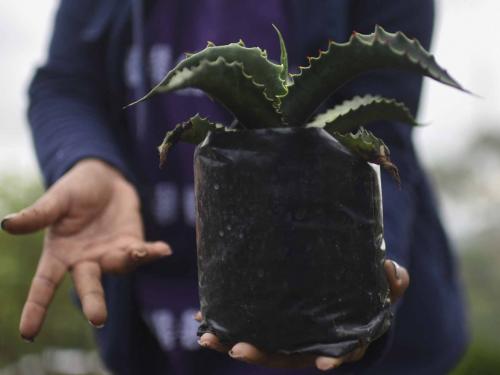
1/18
Graciela Angeles Carreno, who leads a family business of four generations, shows a tobala agave (Agave potatorum) plant at the agave nursery of their Real Minero mezcal factory, in Sata Catarina Minas, Oaxaca state, Mexico, on July 25, 2022. – Craft distillers fear mezcal will become victim of its own success. The fast-growing popularity of Tequila’s lesser-known cousin is raising concerns about its sustainability as strong demand means that more land, water and firewood are needed to grow the agave plants and distill the smoky spirit. Faced with the boom, craft producers are committed to saving wild species by planting them and showcasing the artisanal process behind the liquor. (Photo by Pedro PARDO / AFP)

2/18
Sosima Olivera, who is member of a collective that runs the mezcal factory Tres Colibries (Three Hummingbirds), walks in a field of agave in Villa Sola de Vega, Oaxaca State, Mexico, on July 26, 2022. – Craft distillers fear mezcal will become victim of its own success. The fast-growing popularity of Tequila’s lesser-known cousin is raising concerns about its sustainability as strong demand means that more land, water and firewood are needed to grow the agave plants and distill the smoky spirit. Faced with the boom, craft producers are committed to saving wild species by planting them and showcasing the artisanal process behind the liquor. (Photo by Pedro PARDO / AFP)

3/18
A neon signs reads « If There is Mezcal, There is Love » at a stand selling mezcal at the Mezcal Fair in Oaxaca, Mexico, on July 26, 2022. – Craft distillers fear mezcal will become victim of its own success. The fast-growing popularity of Tequila’s lesser-known cousin is raising concerns about its sustainability as strong demand means that more land, water and firewood are needed to grow the agave plants and distill the smoky spirit. Faced with the boom, craft producers are committed to saving wild species by planting them and showcasing the artisanal process behind the liquor. (Photo by Pedro PARDO / AFP)
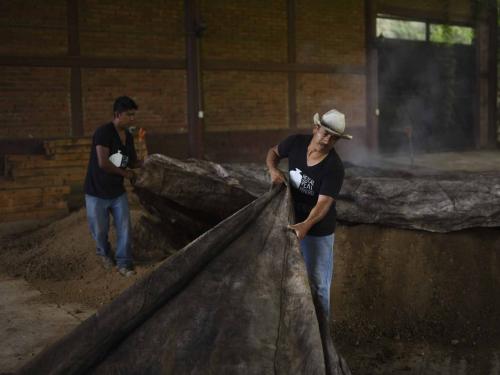
4/18
Workers cook agave pineapple at the Real Minero mezcal factory in Santa Catarina Minas, Oaxaca State, Mexico, on July 25, 2022. – Craft distillers fear mezcal will become victim of its own success. The fast-growing popularity of Tequila’s lesser-known cousin is raising concerns about its sustainability as strong demand means that more land, water and firewood are needed to grow the agave plants and distill the smoky spirit. Faced with the boom, craft producers are committed to saving wild species by planting them and showcasing the artisanal process behind the liquor. (Photo by Pedro PARDO / AFP)
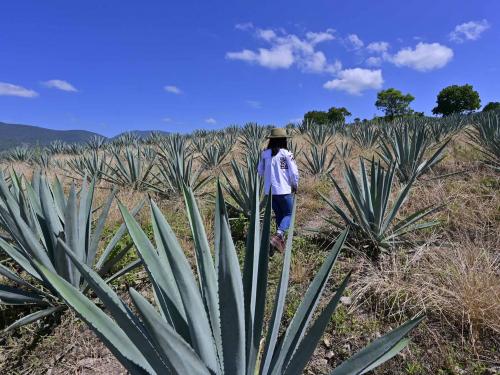
5/18
Sosima Olivera, who is member of a collective that runs the mezcal factory Tres Colibries (Three Hummingbirds), walks in a field of espadin agave (Agave angustifolia) in Villa Sola de Vega, Oaxaca State, Mexico, on July 26, 2022. – Craft distillers fear mezcal will become victim of its own success. The fast-growing popularity of Tequila’s lesser-known cousin is raising concerns about its sustainability as strong demand means that more land, water and firewood are needed to grow the agave plants and distill the smoky spirit. Faced with the boom, craft producers are committed to saving wild species by planting them and showcasing the artisanal process behind the liquor. (Photo by Pedro PARDO / AFP)
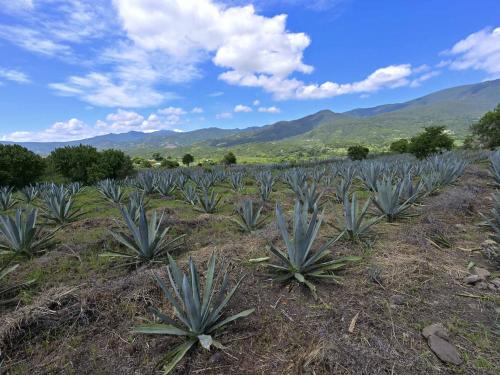
6/18
Picture of a field of espadin agave (Agave angustifolia) taken at the mezcal factory Tres Colibries (Three Hummingbirds) in Villa Sola de Vega, Oaxaca State, Mexico, on July 26, 2022. – Craft distillers fear mezcal will become victim of its own success. The fast-growing popularity of Tequila’s lesser-known cousin is raising concerns about its sustainability as strong demand means that more land, water and firewood are needed to grow the agave plants and distill the smoky spirit. Faced with the boom, craft producers are committed to saving wild species by planting them and showcasing the artisanal process behind the liquor. (Photo by Pedro PARDO / AFP)

7/18
Men work cooking agave pineapple at the Real Minero mezcal factory, in Sata Catarina Minas, Oaxaca state, Mexico, on July 25, 2022. – Craft distillers fear mezcal will become victim of its own success. The fast-growing popularity of Tequila’s lesser-known cousin is raising concerns about its sustainability as strong demand means that more land, water and firewood are needed to grow the agave plants and distill the smoky spirit. Faced with the boom, craft producers are committed to saving wild species by planting them and showcasing the artisanal process behind the liquor. (Photo by Pedro PARDO / AFP)

8/18
Graciela Angeles Carreno, who leads a family business of four generations, servers glasses of mezcal at their Real Minero mezcal factory, in Sata Catarina Minas, Oaxaca state, Mexico, on July 25, 2022. – Craft distillers fear mezcal will become victim of its own success. The fast-growing popularity of Tequila’s lesser-known cousin is raising concerns about its sustainability as strong demand means that more land, water and firewood are needed to grow the agave plants and distill the smoky spirit. Faced with the boom, craft producers are committed to saving wild species by planting them and showcasing the artisanal process behind the liquor. (Photo by Pedro PARDO / AFP)
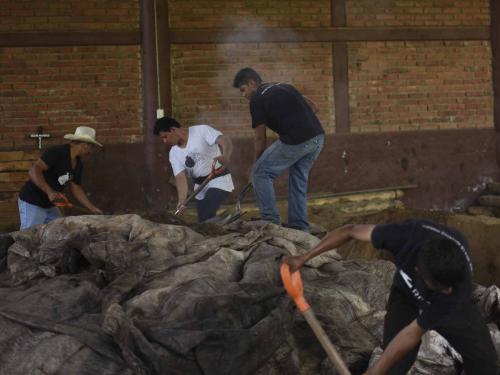
9/18
Workers cook agave pineapple at the Real Minero mezcal factory in Santa Catarina Minas, Oaxaca State, Mexico, on July 25, 2022. – Craft distillers fear mezcal will become victim of its own success. The fast-growing popularity of Tequila’s lesser-known cousin is raising concerns about its sustainability as strong demand means that more land, water and firewood are needed to grow the agave plants and distill the smoky spirit. Faced with the boom, craft producers are committed to saving wild species by planting them and showcasing the artisanal process behind the liquor. (Photo by Pedro PARDO / AFP)

10/18
Workers cook agave pineapple at the Real Minero mezcal factory in Santa Catarina Minas, Oaxaca State, Mexico, on July 25, 2022. – Craft distillers fear mezcal will become victim of its own success. The fast-growing popularity of Tequila’s lesser-known cousin is raising concerns about its sustainability as strong demand means that more land, water and firewood are needed to grow the agave plants and distill the smoky spirit. Faced with the boom, craft producers are committed to saving wild species by planting them and showcasing the artisanal process behind the liquor. (Photo by Pedro PARDO / AFP)

11/18
Workers cut herbs in a field of wild agaves at the mezcal factory Tres Colibries (Three Hummingbirds) in Villa Sola de Vega, Oaxaca State, Mexico, on July 26, 2022. – Craft distillers fear mezcal will become victim of its own success. The fast-growing popularity of Tequila’s lesser-known cousin is raising concerns about its sustainability as strong demand means that more land, water and firewood are needed to grow the agave plants and distill the smoky spirit. Faced with the boom, craft producers are committed to saving wild species by planting them and showcasing the artisanal process behind the liquor. (Photo by Pedro PARDO / AFP)

12/18
Workers cook agave pineapple at the Real Minero mezcal factory in Santa Catarina Minas, Oaxaca State, Mexico, on July 25, 2022. – Craft distillers fear mezcal will become victim of its own success. The fast-growing popularity of Tequila’s lesser-known cousin is raising concerns about its sustainability as strong demand means that more land, water and firewood are needed to grow the agave plants and distill the smoky spirit. Faced with the boom, craft producers are committed to saving wild species by planting them and showcasing the artisanal process behind the liquor. (Photo by Pedro PARDO / AFP)
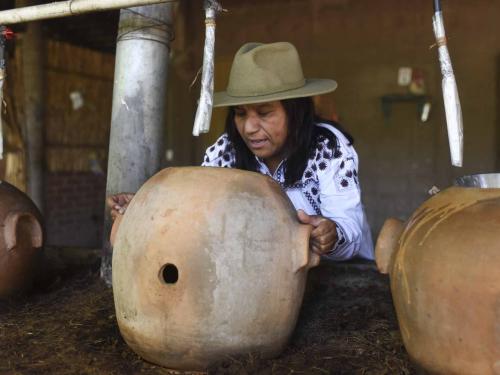
13/18
Sosima Olivera, who is member of a collective that runs the mezcal factory Tres Colibries (Three Hummingbirds), moves a clay pot used for distillation at the factory in Villa Sola de Vega, Oaxaca State, Mexico, on July 26, 2022. – Craft distillers fear mezcal will become victim of its own success. The fast-growing popularity of Tequila’s lesser-known cousin is raising concerns about its sustainability as strong demand means that more land, water and firewood are needed to grow the agave plants and distill the smoky spirit. Faced with the boom, craft producers are committed to saving wild species by planting them and showcasing the artisanal process behind the liquor. (Photo by Pedro PARDO / AFP)
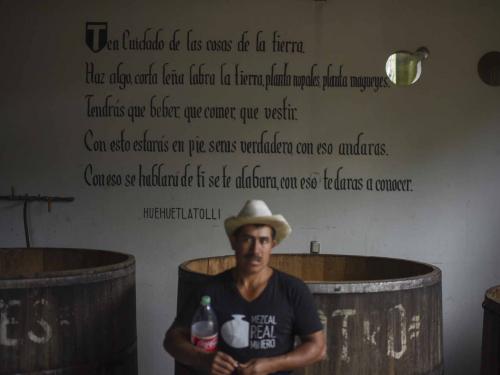
14/18
A worker looks on at the Real Minero mezcal factory in Santa Catarina Minas, Oaxaca State, Mexico, on July 25, 2022. – Craft distillers fear mezcal will become victim of its own success. The fast-growing popularity of Tequila’s lesser-known cousin is raising concerns about its sustainability as strong demand means that more land, water and firewood are needed to grow the agave plants and distill the smoky spirit. Faced with the boom, craft producers are committed to saving wild species by planting them and showcasing the artisanal process behind the liquor. (Photo by Pedro PARDO / AFP)
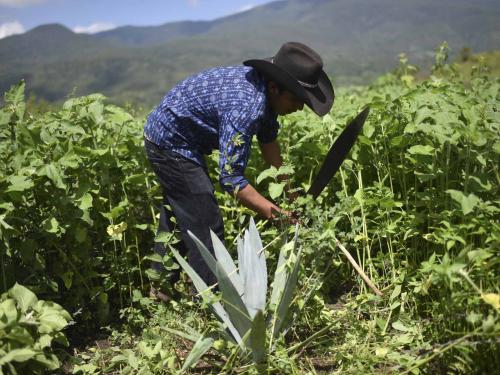
15/18
A worker cuts herbs in a field of wild agaves at the mezcal factory Tres Colibries (Three Hummingbirds) in Villa Sola de Vega, Oaxaca State, Mexico, on July 26, 2022. – Craft distillers fear mezcal will become victim of its own success. The fast-growing popularity of Tequila’s lesser-known cousin is raising concerns about its sustainability as strong demand means that more land, water and firewood are needed to grow the agave plants and distill the smoky spirit. Faced with the boom, craft producers are committed to saving wild species by planting them and showcasing the artisanal process behind the liquor. (Photo by Pedro PARDO / AFP)

16/18
Graciela Angeles Carreno, who leads a family business of four generations, shows the cellar at their Real Minero mezcal factory in Santa Catarina Minas, Oaxaca State, Mexico, on July 25, 2022. – Craft distillers fear mezcal will become victim of its own success. The fast-growing popularity of Tequila’s lesser-known cousin is raising concerns about its sustainability as strong demand means that more land, water and firewood are needed to grow the agave plants and distill the smoky spirit. Faced with the boom, craft producers are committed to saving wild species by planting them and showcasing the artisanal process behind the liquor. (Photo by Pedro PARDO / AFP)

17/18
Sosima Olivera, who is member of a collective that runs the mezcal factory Tres Colibries (Three Hummingbirds), walks in a field of arroqueno agave (Agave americana var. oaxacensis) in Villa Sola de Vega, Oaxaca State, Mexico, on July 26, 2022. – Craft distillers fear mezcal will become victim of its own success. The fast-growing popularity of Tequila’s lesser-known cousin is raising concerns about its sustainability as strong demand means that more land, water and firewood are needed to grow the agave plants and distill the smoky spirit. Faced with the boom, craft producers are committed to saving wild species by planting them and showcasing the artisanal process behind the liquor. (Photo by Pedro PARDO / AFP)
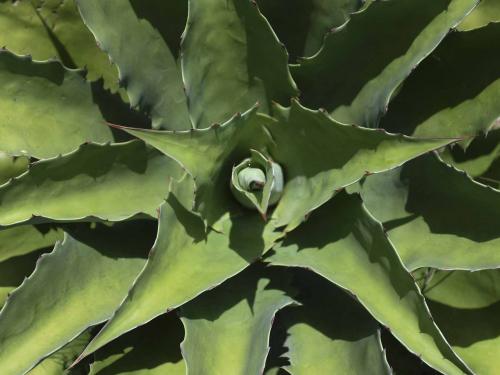
18/18
Picture of a plant of tobala agave (Agave semanianna) taken at the mezcal factory Tres Colibries (Three Hummingbirds) in Villa Sola de Vega, Oaxaca State, Mexico, on July 26, 2022. – Craft distillers fear mezcal will become victim of its own success. The fast-growing popularity of Tequila’s lesser-known cousin is raising concerns about its sustainability as strong demand means that more land, water and firewood are needed to grow the agave plants and distill the smoky spirit. Faced with the boom, craft producers are committed to saving wild species by planting them and showcasing the artisanal process behind the liquor. (Photo by Pedro PARDO / AFP)

1/18
Graciela Angeles Carreno, who leads a family business of four generations, shows a tobala agave (Agave potatorum) plant at the agave nursery of their Real Minero mezcal factory, in Sata Catarina Minas, Oaxaca state, Mexico, on July 25, 2022. – Craft distillers fear mezcal will become victim of its own success. The fast-growing popularity of Tequila’s lesser-known cousin is raising concerns about its sustainability as strong demand means that more land, water and firewood are needed to grow the agave plants and distill the smoky spirit. Faced with the boom, craft producers are committed to saving wild species by planting them and showcasing the artisanal process behind the liquor. (Photo by Pedro PARDO / AFP)

2/18
Sosima Olivera, who is member of a collective that runs the mezcal factory Tres Colibries (Three Hummingbirds), walks in a field of agave in Villa Sola de Vega, Oaxaca State, Mexico, on July 26, 2022. – Craft distillers fear mezcal will become victim of its own success. The fast-growing popularity of Tequila’s lesser-known cousin is raising concerns about its sustainability as strong demand means that more land, water and firewood are needed to grow the agave plants and distill the smoky spirit. Faced with the boom, craft producers are committed to saving wild species by planting them and showcasing the artisanal process behind the liquor. (Photo by Pedro PARDO / AFP)

3/18
A neon signs reads « If There is Mezcal, There is Love » at a stand selling mezcal at the Mezcal Fair in Oaxaca, Mexico, on July 26, 2022. – Craft distillers fear mezcal will become victim of its own success. The fast-growing popularity of Tequila’s lesser-known cousin is raising concerns about its sustainability as strong demand means that more land, water and firewood are needed to grow the agave plants and distill the smoky spirit. Faced with the boom, craft producers are committed to saving wild species by planting them and showcasing the artisanal process behind the liquor. (Photo by Pedro PARDO / AFP)

4/18
Workers cook agave pineapple at the Real Minero mezcal factory in Santa Catarina Minas, Oaxaca State, Mexico, on July 25, 2022. – Craft distillers fear mezcal will become victim of its own success. The fast-growing popularity of Tequila’s lesser-known cousin is raising concerns about its sustainability as strong demand means that more land, water and firewood are needed to grow the agave plants and distill the smoky spirit. Faced with the boom, craft producers are committed to saving wild species by planting them and showcasing the artisanal process behind the liquor. (Photo by Pedro PARDO / AFP)

5/18
Sosima Olivera, who is member of a collective that runs the mezcal factory Tres Colibries (Three Hummingbirds), walks in a field of espadin agave (Agave angustifolia) in Villa Sola de Vega, Oaxaca State, Mexico, on July 26, 2022. – Craft distillers fear mezcal will become victim of its own success. The fast-growing popularity of Tequila’s lesser-known cousin is raising concerns about its sustainability as strong demand means that more land, water and firewood are needed to grow the agave plants and distill the smoky spirit. Faced with the boom, craft producers are committed to saving wild species by planting them and showcasing the artisanal process behind the liquor. (Photo by Pedro PARDO / AFP)

6/18
Picture of a field of espadin agave (Agave angustifolia) taken at the mezcal factory Tres Colibries (Three Hummingbirds) in Villa Sola de Vega, Oaxaca State, Mexico, on July 26, 2022. – Craft distillers fear mezcal will become victim of its own success. The fast-growing popularity of Tequila’s lesser-known cousin is raising concerns about its sustainability as strong demand means that more land, water and firewood are needed to grow the agave plants and distill the smoky spirit. Faced with the boom, craft producers are committed to saving wild species by planting them and showcasing the artisanal process behind the liquor. (Photo by Pedro PARDO / AFP)

7/18
Men work cooking agave pineapple at the Real Minero mezcal factory, in Sata Catarina Minas, Oaxaca state, Mexico, on July 25, 2022. – Craft distillers fear mezcal will become victim of its own success. The fast-growing popularity of Tequila’s lesser-known cousin is raising concerns about its sustainability as strong demand means that more land, water and firewood are needed to grow the agave plants and distill the smoky spirit. Faced with the boom, craft producers are committed to saving wild species by planting them and showcasing the artisanal process behind the liquor. (Photo by Pedro PARDO / AFP)

8/18
Graciela Angeles Carreno, who leads a family business of four generations, servers glasses of mezcal at their Real Minero mezcal factory, in Sata Catarina Minas, Oaxaca state, Mexico, on July 25, 2022. – Craft distillers fear mezcal will become victim of its own success. The fast-growing popularity of Tequila’s lesser-known cousin is raising concerns about its sustainability as strong demand means that more land, water and firewood are needed to grow the agave plants and distill the smoky spirit. Faced with the boom, craft producers are committed to saving wild species by planting them and showcasing the artisanal process behind the liquor. (Photo by Pedro PARDO / AFP)

9/18
Workers cook agave pineapple at the Real Minero mezcal factory in Santa Catarina Minas, Oaxaca State, Mexico, on July 25, 2022. – Craft distillers fear mezcal will become victim of its own success. The fast-growing popularity of Tequila’s lesser-known cousin is raising concerns about its sustainability as strong demand means that more land, water and firewood are needed to grow the agave plants and distill the smoky spirit. Faced with the boom, craft producers are committed to saving wild species by planting them and showcasing the artisanal process behind the liquor. (Photo by Pedro PARDO / AFP)

10/18
Workers cook agave pineapple at the Real Minero mezcal factory in Santa Catarina Minas, Oaxaca State, Mexico, on July 25, 2022. – Craft distillers fear mezcal will become victim of its own success. The fast-growing popularity of Tequila’s lesser-known cousin is raising concerns about its sustainability as strong demand means that more land, water and firewood are needed to grow the agave plants and distill the smoky spirit. Faced with the boom, craft producers are committed to saving wild species by planting them and showcasing the artisanal process behind the liquor. (Photo by Pedro PARDO / AFP)

11/18
Workers cut herbs in a field of wild agaves at the mezcal factory Tres Colibries (Three Hummingbirds) in Villa Sola de Vega, Oaxaca State, Mexico, on July 26, 2022. – Craft distillers fear mezcal will become victim of its own success. The fast-growing popularity of Tequila’s lesser-known cousin is raising concerns about its sustainability as strong demand means that more land, water and firewood are needed to grow the agave plants and distill the smoky spirit. Faced with the boom, craft producers are committed to saving wild species by planting them and showcasing the artisanal process behind the liquor. (Photo by Pedro PARDO / AFP)

12/18
Workers cook agave pineapple at the Real Minero mezcal factory in Santa Catarina Minas, Oaxaca State, Mexico, on July 25, 2022. – Craft distillers fear mezcal will become victim of its own success. The fast-growing popularity of Tequila’s lesser-known cousin is raising concerns about its sustainability as strong demand means that more land, water and firewood are needed to grow the agave plants and distill the smoky spirit. Faced with the boom, craft producers are committed to saving wild species by planting them and showcasing the artisanal process behind the liquor. (Photo by Pedro PARDO / AFP)

13/18
Sosima Olivera, who is member of a collective that runs the mezcal factory Tres Colibries (Three Hummingbirds), moves a clay pot used for distillation at the factory in Villa Sola de Vega, Oaxaca State, Mexico, on July 26, 2022. – Craft distillers fear mezcal will become victim of its own success. The fast-growing popularity of Tequila’s lesser-known cousin is raising concerns about its sustainability as strong demand means that more land, water and firewood are needed to grow the agave plants and distill the smoky spirit. Faced with the boom, craft producers are committed to saving wild species by planting them and showcasing the artisanal process behind the liquor. (Photo by Pedro PARDO / AFP)

14/18
A worker looks on at the Real Minero mezcal factory in Santa Catarina Minas, Oaxaca State, Mexico, on July 25, 2022. – Craft distillers fear mezcal will become victim of its own success. The fast-growing popularity of Tequila’s lesser-known cousin is raising concerns about its sustainability as strong demand means that more land, water and firewood are needed to grow the agave plants and distill the smoky spirit. Faced with the boom, craft producers are committed to saving wild species by planting them and showcasing the artisanal process behind the liquor. (Photo by Pedro PARDO / AFP)

15/18
A worker cuts herbs in a field of wild agaves at the mezcal factory Tres Colibries (Three Hummingbirds) in Villa Sola de Vega, Oaxaca State, Mexico, on July 26, 2022. – Craft distillers fear mezcal will become victim of its own success. The fast-growing popularity of Tequila’s lesser-known cousin is raising concerns about its sustainability as strong demand means that more land, water and firewood are needed to grow the agave plants and distill the smoky spirit. Faced with the boom, craft producers are committed to saving wild species by planting them and showcasing the artisanal process behind the liquor. (Photo by Pedro PARDO / AFP)

16/18
Graciela Angeles Carreno, who leads a family business of four generations, shows the cellar at their Real Minero mezcal factory in Santa Catarina Minas, Oaxaca State, Mexico, on July 25, 2022. – Craft distillers fear mezcal will become victim of its own success. The fast-growing popularity of Tequila’s lesser-known cousin is raising concerns about its sustainability as strong demand means that more land, water and firewood are needed to grow the agave plants and distill the smoky spirit. Faced with the boom, craft producers are committed to saving wild species by planting them and showcasing the artisanal process behind the liquor. (Photo by Pedro PARDO / AFP)

17/18
Sosima Olivera, who is member of a collective that runs the mezcal factory Tres Colibries (Three Hummingbirds), walks in a field of arroqueno agave (Agave americana var. oaxacensis) in Villa Sola de Vega, Oaxaca State, Mexico, on July 26, 2022. – Craft distillers fear mezcal will become victim of its own success. The fast-growing popularity of Tequila’s lesser-known cousin is raising concerns about its sustainability as strong demand means that more land, water and firewood are needed to grow the agave plants and distill the smoky spirit. Faced with the boom, craft producers are committed to saving wild species by planting them and showcasing the artisanal process behind the liquor. (Photo by Pedro PARDO / AFP)

18/18
Picture of a plant of tobala agave (Agave semanianna) taken at the mezcal factory Tres Colibries (Three Hummingbirds) in Villa Sola de Vega, Oaxaca State, Mexico, on July 26, 2022. – Craft distillers fear mezcal will become victim of its own success. The fast-growing popularity of Tequila’s lesser-known cousin is raising concerns about its sustainability as strong demand means that more land, water and firewood are needed to grow the agave plants and distill the smoky spirit. Faced with the boom, craft producers are committed to saving wild species by planting them and showcasing the artisanal process behind the liquor. (Photo by Pedro PARDO / AFP)






